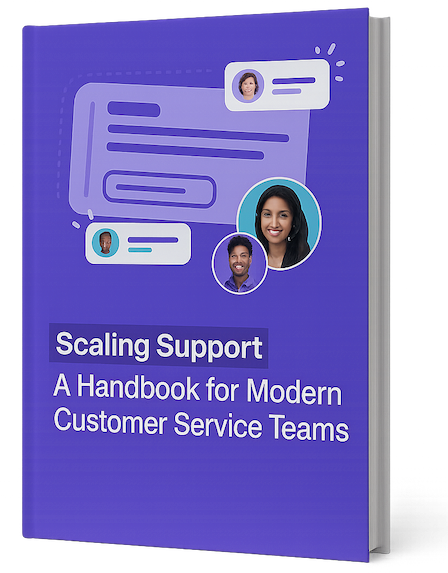Most companies think they’re providing excellent customer service, but the data tells a different story. Research shows a stark contrast – while 90% of brands believe they deliver “good enough” experiences, only 40% of customers agree. Even more concerning, just 11% of customers would rate their experience a 9 or 10. This major gap between company and customer perceptions reveals a serious blind spot that needs addressing.
Identifying the Perception Gap
Several factors contribute to this disconnect between companies and customers. Many businesses focus too heavily on internal metrics like handle times and call volumes rather than looking at the full customer journey. They also tend to rely on limited feedback tools like post-interaction surveys, which only capture a narrow slice of the customer experience. This means they miss out on valuable insights that could help them truly understand how satisfied their customers are.
Bridging the Gap: Aligning Perceptions With Reality
To better grasp what makes a good customer experience, companies need to shift their focus outward. This means actively gathering feedback through multiple channels – social media, online reviews, and direct conversations with customers. For example, implementing real-time feedback systems allows companies to quickly address negative experiences. This not only helps solve individual issues but provides crucial data to drive ongoing improvements.
The Importance of a Holistic View
A good customer experience isn’t just about one interaction – it’s about every touchpoint a customer has with your brand, from first learning about you through ongoing support. Research shows that 74% of customers have to use multiple channels to complete a transaction, highlighting how fragmented many customer journeys are. Consider how a great sales experience can be completely undermined by poor customer service later on. Breaking down internal silos and creating seamless experiences across departments is essential.
Building a Customer-Centric Culture
Creating consistently good customer experiences requires fundamentally changing company culture. This means giving employees the authority and tools they need to put customers first. It also requires building a mindset of continuous improvement where customer feedback directly shapes decision-making. When companies close the perception gap and focus on the complete customer journey, they create experiences that drive loyalty and growth. This foundation sets the stage for exploring how being responsive shapes modern customer interactions.
Mastering the Art of Responsive Service

A customer-centric culture sets the foundation for truly effective service that meets customer needs. Research shows that 72% of customers expect quick responses when interacting with businesses. This creates significant challenges for companies working to deliver excellent service while maintaining quality.
Balancing Speed and Meaningful Interaction
The need for speed shouldn’t overshadow the importance of personalized, empathetic service. Think of a restaurant experience – fast service is great, but if the food is cold or the server is rude, customers leave dissatisfied. The same principle applies to customer service interactions. Even digital-native customers who value quick responses still want personalized attention that makes them feel valued.
Streamlining Service Operations for Efficiency
Companies can achieve this balance by implementing smart systems that enable fast responses while ensuring quality. For instance, well-designed chatbots can handle basic questions, allowing human agents to focus on more complex issues. A thorough knowledge base also helps customers find answers independently, improving overall service efficiency without sacrificing the personal touch.
Technology as a Tool, Not a Replacement
While technology helps improve service delivery, it works best as a complement to human interaction rather than a replacement. Consider tools like SupportMan that integrate customer feedback into Slack, allowing support teams to quickly discuss ratings and metrics. This human-centered approach to using technology helps create better customer experiences while keeping staff engaged and informed.
Managing High-Volume Periods
Handling peak service times while maintaining quality presents unique challenges. Successful organizations prepare for high-volume periods by:
- Adjusting staffing levels appropriately
- Optimizing self-service resources
- Communicating proactively about potential delays
- Training teams to handle increased pressure
This forward-thinking approach helps ensure customers feel valued even during busy times. Ultimately, excellent service requires blending efficient processes and genuine care for customer needs – supported by technology but driven by human connection.
Creating Personalization That Actually Matters
True personalization goes far beyond simply adding a customer’s name to an email. To create experiences that genuinely connect with customers, businesses need to understand their unique needs, preferences, and behaviors. This means looking past basic demographics and diving into meaningful data like purchase history, browsing patterns, and how customers prefer to communicate with your brand.
Building Trust Through Ethical Data Use
Since personalization relies heavily on customer information, being transparent about data practices is essential. Customers should clearly understand what data you collect, how you’ll use it, and what benefits they receive in return. Building this trust means giving customers control over their data, including the ability to opt out of personalized recommendations if they choose. When customers feel respected and empowered in their privacy choices, they’re more likely to engage with your personalization efforts.
Segmentation That Works: Beyond Demographics
Good personalization starts with smart customer segmentation based on real behaviors and needs rather than just surface-level demographics. For example, grouping customers by how often they buy, what product categories they prefer, or how they interact with marketing helps create more relevant experiences. A clothing store could use past purchase data to recommend complementary items rather than sending generic promotions to everyone. This targeted approach shows customers you understand their preferences.
Balancing Automation With the Human Touch
While automation helps deliver personalized experiences at scale, the human element remains crucial. A successful approach combines both – using automated systems for tasks like personalized email campaigns while ensuring customers can easily reach a real person when needed. Offering multiple support channels lets customers choose how they want to interact, whether that’s through quick automated responses or in-depth conversations with your team.
Measuring the ROI of Personalization
To understand if personalization efforts are working, businesses need clear metrics. Track key indicators like conversion rates, customer lifetime value, and satisfaction scores to see which strategies truly resonate with customers. Use this data to continuously refine your approach, focusing on personalization that meaningfully improves customer experience while supporting business growth. Regular analysis helps identify what connects with customers and drives real results.
Breaking Down Organizational Barriers to Service Excellence

Creating an outstanding customer experience depends heavily on how well different departments work together within a company. When teams operate in silos, customers often face disjointed and frustrating experiences. For instance, a smooth sales process can be quickly undermined by poor post-sale support if teams aren’t aligned. These gaps between departments directly impact how customers view and trust your brand.
Identifying Common Friction Points
To improve service delivery, start by mapping out every interaction customers have with your company – from their first contact through ongoing support. Look closely at where communication breaks down or where responsibilities become unclear. Consider basic questions: Do your marketing materials match what your product actually does? Can support teams quickly access the information they need? Finding these pain points is essential for making meaningful improvements to the customer experience.
Fostering Cross-Departmental Communication
Good communication between departments is vital for breaking down internal barriers. This means creating clear channels for sharing information and building a culture where open dialogue is normal. Tools that enable real-time collaboration help keep everyone on the same page. Take SupportMan for example – it feeds customer feedback directly into Slack so support teams can quickly discuss ratings with other departments. Regular cross-team meetings to review customer feedback and address issues also strengthen working relationships.
Aligning on Shared Customer Success Metrics
Different departments need common goals to work effectively together. Setting shared customer success metrics helps create collective responsibility for the customer experience. These might include satisfaction scores, Net Promoter Scores (NPS), or customer retention rates. When all teams are accountable for the same metrics, they’re more likely to collaborate to improve them. A central dashboard tracking these key measures can help teams monitor progress and reinforce the importance of working as one unit. This alignment is especially critical since research shows 54% of customers experience disconnects between departments.
Building a Collaborative Culture
At its core, breaking down organizational barriers requires changing company culture. This means helping every employee understand their role in creating positive customer experiences. Give staff the freedom to work across department lines to solve customer problems. Celebrate team wins and learn from setbacks together. When everyone shares the goal of excellent customer service, it creates better outcomes for both employees and customers. This unified approach can improve not just internal operations but also how customers see and interact with your brand over time.
Measuring the Business Impact of Customer Experience

While delivering great customer experience is essential, showing its concrete impact on business results is what gets leadership buy-in. This means going beyond basic metrics like social media engagement to demonstrate how positive customer experiences directly affect revenue and profitability. Let’s explore how to effectively measure and communicate the ROI of investing in exceptional customer experiences.
Linking Customer Experience to Revenue Growth
The data is clear – companies that excel at customer experience outperform their competitors financially. Research shows brands with superior customer experience achieve 4-8% higher revenue growth compared to industry peers. This isn’t surprising when you consider the ripple effects: satisfied customers make repeat purchases more often, spend more per order, and actively recommend brands to others. These behaviors compound over time to drive sustainable business growth.
Key Metrics for Measuring CX Impact
To demonstrate the business value of customer experience, focus on metrics that resonate with leadership teams and connect directly to financial outcomes:
- Customer Lifetime Value (CLTV): This measures expected total revenue from each customer relationship. Great experiences significantly boost CLTV by increasing loyalty and purchase frequency.
- Customer Churn Rate: The percentage of customers who stop doing business with you in a given period. High churn often signals experience problems and directly impacts the bottom line.
- Net Promoter Score (NPS): This gauges customer loyalty and likelihood to recommend. Higher NPS correlates with revenue growth through referral marketing.
- Conversion Rates: The proportion of prospects who become customers. A smooth, enjoyable customer journey naturally leads to better conversion rates.
Building a Compelling Business Case for CX Investment
To secure resources for customer experience initiatives, present a clear ROI case:
- Quantify the Cost of Poor CX: Calculate revenue lost through customer churn and negative reviews. This shows the real financial impact of neglecting customer experience.
- Demonstrate Value Created: Use data to show how CX improvements drive concrete benefits like increased sales and customer lifetime value. Include specific examples and case studies.
- Create a Measurement Framework: Outline how you’ll track success using the key metrics above. This provides accountability and enables continuous optimization.
By effectively measuring and communicating how customer experience impacts business performance, you can shift perceptions from seeing CX as a cost center to recognizing it as a growth driver. This approach helps build a customer-focused culture that benefits both customers and the bottom line. Next, we’ll explore how to develop lasting customer trust and loyalty.
Building Long-Term Trust Through Consistent Excellence
Quality customer service isn’t a one-time achievement – it comes from repeatedly meeting and exceeding what customers expect. When you deliver excellent experiences day after day, you build the deep trust that turns casual buyers into loyal advocates who fuel your company’s growth.
Maintaining Service Quality Across All Channels
Modern customers interact with businesses through multiple touchpoints – social media, retail locations, online shopping, and more. Delivering consistent, high-quality service across each channel is essential for creating good customer experiences. For instance, if someone has a great chat support interaction but then faces unhelpful staff in-store, that inconsistency can quickly damage their trust. That’s why clear service standards and thorough staff training are critical, regardless of how customers reach out. Making sure your brand voice and response times stay consistent, whether through email, phone, chat or social media, helps build a reliable and trustworthy image.
Empowering Your Team Through Effective Training
Even the best service guidelines only work when your team knows how to apply them properly. Strong training programs need to cover both product knowledge and essential soft skills like empathy, active listening, and problem-solving. Using real-world scenario practice lets staff build confidence in handling different customer situations. Regular coaching and feedback help teams refine their abilities and adapt to changing customer needs. Like athletes who constantly practice to stay sharp, customer service teams need ongoing development to deliver consistently great experiences.
Creating Memorable and Shareable Experiences
With so many options available to customers, creating standout experiences is vital. Often small, personalized touches make the biggest impact – like including a handwritten thank you note with an order or following up proactively to check if a product is working well. These thoughtful gestures show genuine care and help forge emotional connections with your brand. Customers are far more likely to share negative experiences than positive ones, so going above and beyond is key for generating word-of-mouth recommendations.
Developing and Implementing Effective Service Standards
Clear service standards provide a roadmap for consistent excellence at every customer touchpoint. These standards should be specific, measurable, and aligned with both customer expectations and your company’s capabilities. For example, you might set standards like responding to all inquiries within 24 hours or resolving certain issues within defined timeframes. Having measurable benchmarks creates accountability and helps identify areas for improvement. Tools like SupportMan can help track these metrics and gather customer input to continuously refine your service standards.
Streamline your support operations and build a customer-centric culture with SupportMan. Start your free trial today and see how real-time feedback can transform your customer service.


